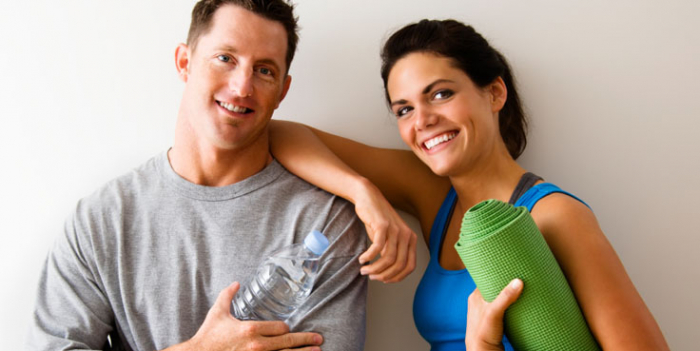Posted: October 13, 2014
Many individuals who have Cerebral Palsy, like Maysoon Zayid, Josh Blue, John Quinn, and Ryan McGraw, have all practice yoga to improve balance, coordination, stability and movement while strengthening the mind.
Yoga is a mind and body practice that originated from ancient Indian philosophy. It focuses on slow, controlled movements aimed at stretching and relaxing your muscles. By holding certain poses for a specified amount of time, yoga can improve posture by relaxing and strengthening the muscles around the spine.
30-year-old Ryan McGraw has Cerebral Palsy and practices yoga in the suburbs of Detroit. He said, “Of course, we’re not going to look like the people on the cover of yoga magazines posing perfectly when we’re doing yoga. But we don’t have to do the poses in the way that everyone else does as long as we find a way that works for us that gives us the same benefits.”
While the physical needs of people with disabilities vary, there is one constant: Everyone, regardless of their physical capabilities, needs to find some way of staying as fit as possible. Individuals like Ryan believe that yoga may be the solution for people with Cerebral Palsy.
“It improves strength, coordination and flexibility,” he said. “Those are the physical issues a person with Cerebral Palsy has to address.”
Erin Feeny, a young adult with Cerebral Palsy, spends an hour each week practicing yoga. Her mother, Louise Feeny, believes yoga has helped her daughter with digestion, trunk control, stamina, and breathing. When Erin was able to blow out birthday candles for the very first time on her 19th birthday, Louise said it was thanks to yoga.
While no official clinical trial has been conducted on the effectiveness of yoga for Cerebral Palsy, Livestrong.com and the National Center on Physical Activity and Disability state that regular yoga sessions can help people with Cerebral Palsy improve their muscle tone as well as reduce tension in muscles and joints.
Yoga isn’t limited to just adults. Jamie of CosmicKids.com, a yoga instructor, has a six-year-old student named David who has mild Cerebral Palsy. “I had no idea how beneficial yoga would be for David,” said Jamie. “He lights up when he comes into the room and sees me setting up the mats!”
Sonia Sumar, who runs Yoga for the Special Child®, LLC, describes the benefits of yoga for individuals with Cerebral Palsy:
“The practice of Yoga poses (asanas), followed by deep relaxation, can help to significantly reduce high muscle tone, which is characteristic of most children with Cerebral Palsy. Holding an asana gives the muscles and tendons a relaxing stretch, releasing overall stress and tightness throughout the musculature and around the joints. At the same time that asanas are relaxing the body, they also provide just enough resistance to exercise low muscle tone areas of the body. In this way asanas actually improve both high and low muscle tone problems in children with Cerebral Palsy.
Perhaps the most important aspect of asana practice for children with Cerebral Palsy is its ability to stretch and realign the spine. Asanas flex and twist the spine in all directions. This scientifically designed series of stretches and counter-stretches helps to create more space between the vertebrae and reduce pressure on the disks and nerves that radiate out of the spine. Reducing the pressure on these radial nerves facilitates the release of muscular tension throughout the body and enhances overall nerve function. As a result, the child is able to develop a greater range of movement and coordination, as well as greater independence.”
If you have Cerebral Palsy and have had experience with yoga, we would love to know in what ways it has helped you. Share your experience by leaving a comment below.






